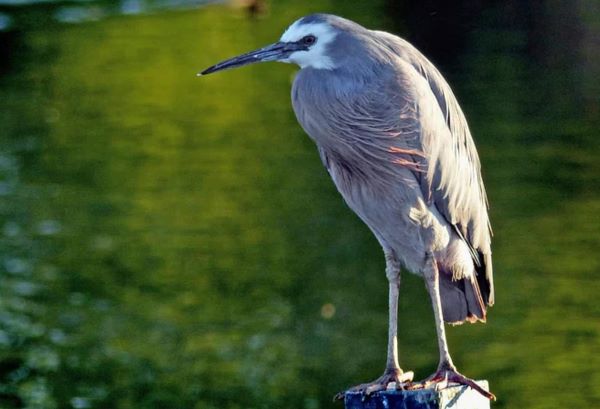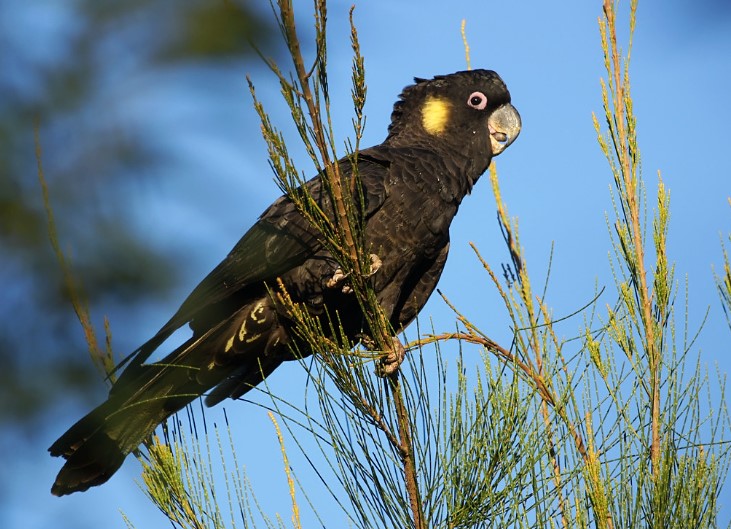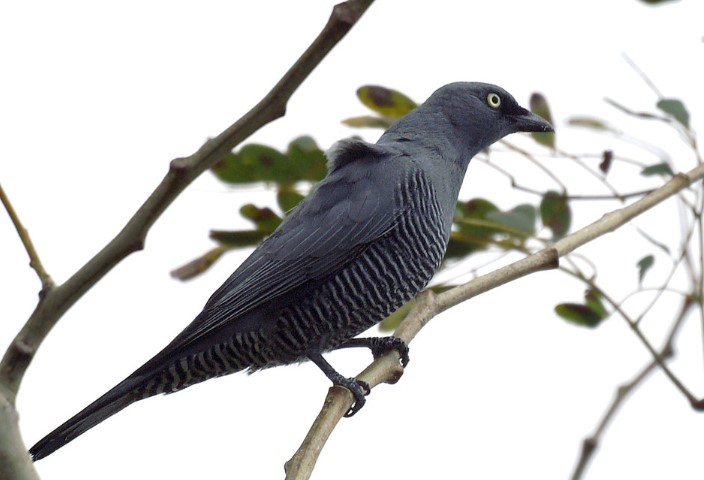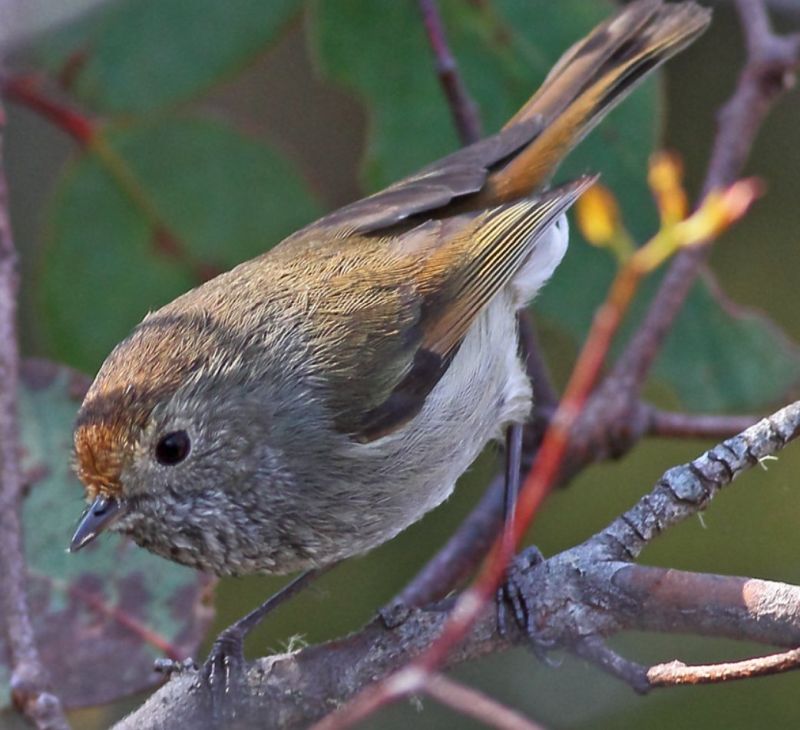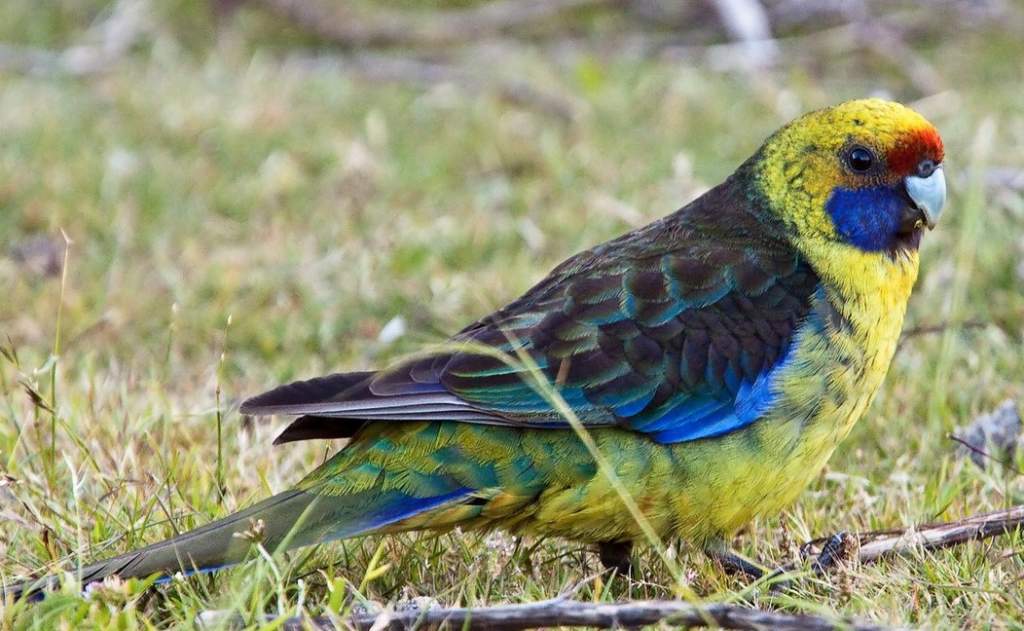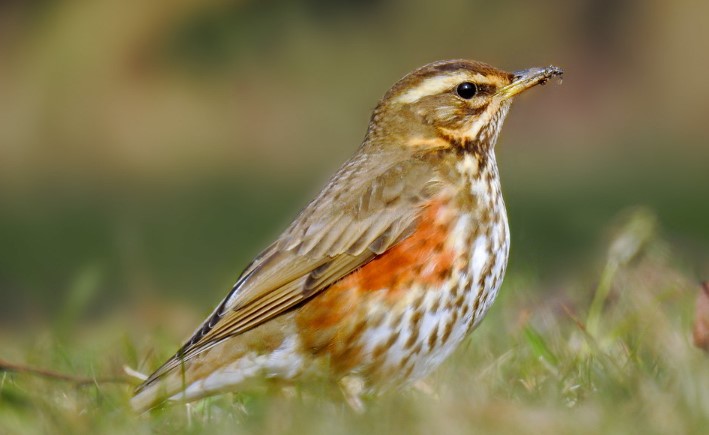Family: The white-faced heron (Egretta novaehollandiae) is a member of the heron family Ardeidae in the genus Egretta.
Habitat: The white-faced heron is most commonly seen in Australia, including New Guinea, the islands of the Torres Strait, Indonesia, and New Zealand—usually one or a pair, stalking about in shallow water or on pastures, occasionally shooting out its long S-shaped neck to catch prey. The white-faced heron is a slow-moving, bouncy bird that usually sits on telephone poles, trees, fence posts, and house roofs.
Identification: Both adult sexes are identical; however, males are larger. General plumage is two-tone grey, with flight feathers darker than the rest of the plumage. The face and stripe on the throat are white. Long grey plumes on the back, vinous on the breast. Eye yellow; naked skin in front of eye slate with lemon eyelid. Bill black. Legs and feet are olive-yellow. The immatures are adults, but little white on the forehead and no nuptial plumes. The downy young are grey; their bill and feet are as adults.

Diet: During the breeding season, white-faced herons tend to be territorial, although they can also graze in groups outside the breeding season, especially after rain or flooding. White-faced herons typically feed alone or in small groups. Their prey is varied, mostly crustaceans, squid, fish, insects, amphibians, spiders, snails, and worms. Their mode of hunting follows the usual wait-and-watch and slow stalk methods, and they will stir one foot in water, but they tend to walk further and more quickly than most larger herons.
Courtship: During courtship, one bird pursues another, gently traveling along a branch with its head lowered and crest and scapulars erect, pecking at sticks. Males and females relieve one another every 10 hours or less during incubation, with much bill-snapping, croaking, and preening. Both parents brood and feed the young through regurgitation, with the chicks typically putting their bills crosswise into their parents’. If chicks are disturbed, they freeze with up-pointing bills. After fledging, they remain with their parents until chased off at the recommencement of nesting.
Behavior: Herons have a special hinge at the sixth vertebra that allows them to strike with the neck. They also have tufts of powder under the plumage on the breast and rump. These feathers disintegrate to produce a protective powder, which the birds pick up with their bills to groom their plumage. Among the herons, white-faced are generalists, both in their habitats and feeding. They forage on intertidal mud flats and rock pools, swamps, wet pastures, and even residential lawns. On mud flats, the birds normally spread out, but on grassland, they tend to swarm loosely. Geographically nomadic, it can be found in salty and freshwater wetlands, farm dams, pastures, grasslands, crops, shorelines, saltmarsh, tidal mudflats, boat harbors, golf courses, orchards, as well as garden fish ponds.
Vocalization: The white-faced heron’s voice is a loud croak in alarm, guttural notes, and an aggressive grating graak at the nest. Gow, gow, gow is the call that is usually made as a bird returns to its nest. Alarm calls are high-pitched wrank, oooooooooh, or aaarrrgh calls.
Nesting and Breeding: The white-faced heron nests and breeds most of the year, depending on food supplies, mostly in southern and inland Australia over the summer, using northern wetlands more as dry-season refuge. Nest a loose platform of sticks up to 20 m above ground in a tree not necessarily near water. Nests sometimes form loose aggregations. Though the birds may breed in other seasons in reaction to rainfall, breeding usually occurs in the austral spring.

Eggs and Incubation: The white-faced heron lays up to 7, usually 4 eggs, pale blue, oval, about 48 x 35 mm. The incubation period is about 24–26 days for both sexes. The chicks are reared by their parents for 3–4 weeks before leaving the nest in forty days. Usually, only one brood is raised each year.
Distribution: white-faced herons are frequented near lakes, swamps, estuaries, mangroves, dams, tidal mudflats, and grasslands throughout Australia. Nomadic. Also in New Zealand, New Guinea, eastern Indonesia, and some southwestern Pacific islands.
Alternative Names: This bird is also known as White-fronted Heron, Grey Heron, and Blue Crane.
Size: The white-faced heron is about 650–690 mm in length and weighs 520–550 grams.
Predators: Kookaburras, Australian magpies, hawks, and owls are common predators of nestlings.
Races: Possibly two races: one small in New Caledonia and Loyalties; the other larger everywhere else.
Names in other languages:
-
German: Weisswangenreiher
-
Spanish: Garceta Cariblanca
-
Dutch: Witwangreiger
-
Croatian: bjelolica čaplja
-
French: Aigrette à face blanche
-
Swedish: Vithuvad häger
-
Portuguese: Garça-de-cara-branca
-
Norwegian: Hvitmaskehegre
-
Italian: Airone faccia bianca
Read More: Striated Heron (Butorides striata)
